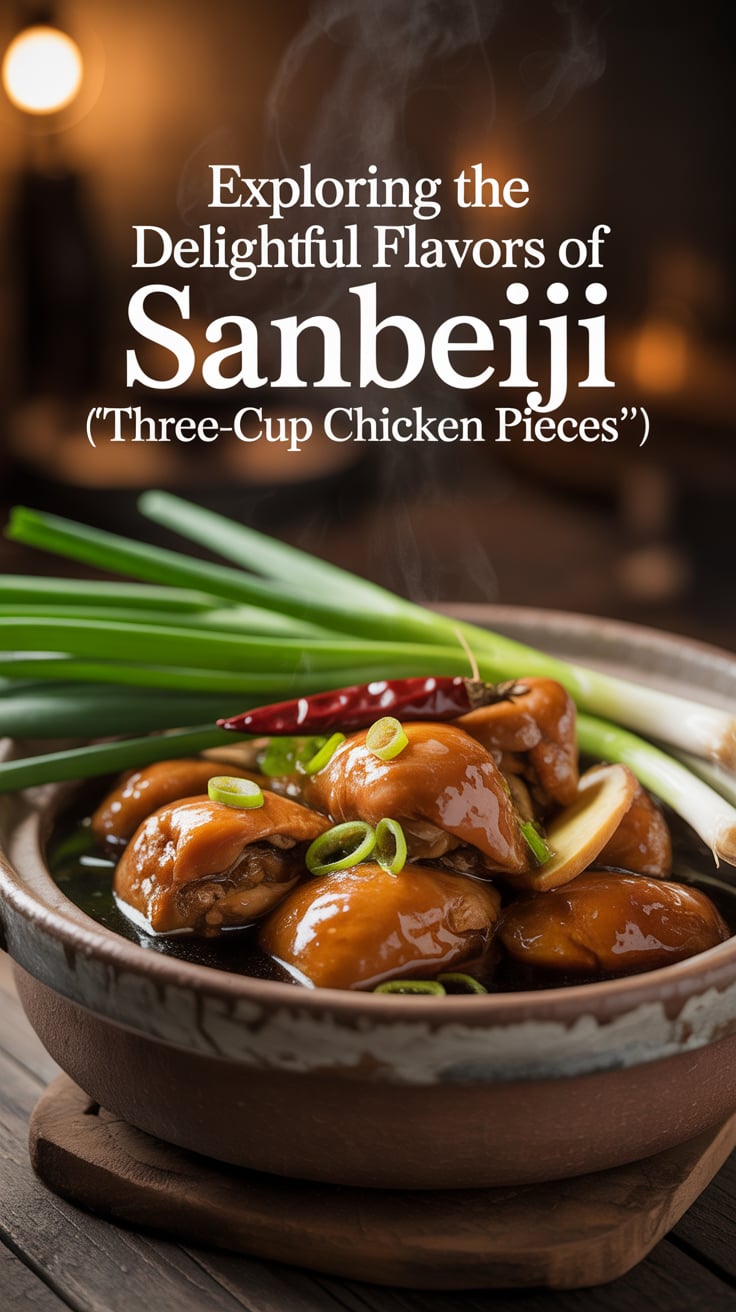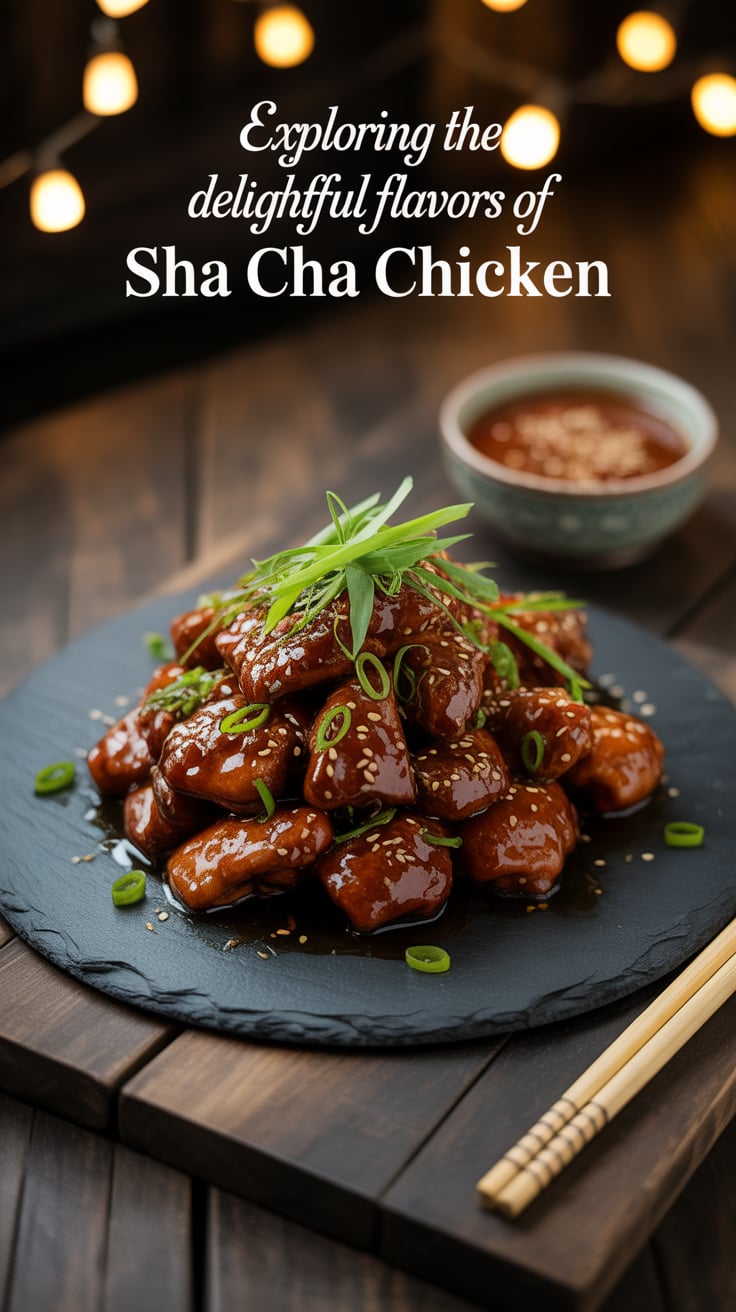Imagine yourself in a bustling Taiwanese kitchen, the aroma of garlic and ginger wafting through the air as a sizzling hot wok cooks up a delicious dish known as Sanbeiji, or “Three-Cup Chicken.” This traditional Taiwanese recipe is a flavorful and aromatic dish that has been enjoyed for centuries, and today, we will delve into the history, ingredients, and preparation of this delectable meal.
The History and Origins of Sanbeiji
Sanbeiji, which translates to “Three-Cup Chicken,” is a classic Taiwanese dish that dates back to the Qing Dynasty. Legend has it that a military leader named Wen Tianxiang created this dish using equal parts soy sauce, sesame oil, and rice wine, hence the name “Three-Cup Chicken.” Over the years, the recipe has evolved, with various regions in Taiwan adding their own unique twist to the dish.
Reasons to Make Sanbeiji
- Experience the authentic flavors of Taiwanese cuisine.
- Impress your friends and family with a traditional Taiwanese dish.
- Enjoy a delicious and aromatic meal that is easy to prepare.
What Makes Sanbeiji Different and Unique
What sets Sanbeiji apart from other chicken dishes is its rich and savory sauce, which is infused with the flavors of soy sauce, sesame oil, and rice wine. The combination of these ingredients creates a mouthwatering dish that is both comforting and satisfying.
Ingredients
- Chicken: 1 whole chicken, cut into pieces
- Soy sauce: 1/2 cup
- Sesame oil: 1/4 cup
- Rice wine: 1/4 cup
- Ginger: 3 slices, minced
- Garlic: 5 cloves, minced
- Green onions: 4 stalks, chopped
- Thai basil: a handful, for garnish
Preparing the Ingredients
Before you begin cooking, make sure to cut the chicken into pieces, mince the ginger and garlic, and chop the green onions. This will ensure that all the ingredients are ready to go when you start cooking.
Kitchen Tools Required
To make Sanbeiji, you will need a wok or a large skillet, a cutting board, a knife, and a spatula. These tools are essential for cooking the chicken and creating the flavorful sauce.
Temperature and Timing Guide
Cook the chicken over medium-high heat for about 10-15 minutes, or until it is cooked through. The sauce should thicken and coat the chicken pieces, creating a glossy and flavorful dish.
Common Issues and Solutions
- If the sauce is too thin, you can add a cornstarch slurry to thicken it.
- If the chicken is overcooked, reduce the cooking time to prevent it from becoming tough.
Instructions
- Heat the wok: Heat the wok over medium-high heat and add the sesame oil.
- Cook the aromatics: Add the minced ginger and garlic to the wok and sauté until fragrant.
- Add the chicken: Add the chicken pieces to the wok and cook until browned on all sides.
- Pour in the sauce: Add the soy sauce, rice wine, and green onions to the wok and stir to combine.
- Simmer: Cover the wok and simmer for 10-15 minutes, or until the chicken is cooked through.
- Garnish and serve: Garnish with Thai basil and serve hot with steamed rice.
Nutritional Value
One serving of Sanbeiji contains approximately 350 calories, making it a satisfying and nutritious meal option. The dish is high in protein and essential nutrients, making it a healthy choice for any meal.
Tips for Restaurant-Quality Results
To achieve restaurant-quality results when making Sanbeiji, make sure to use high-quality ingredients, such as free-range chicken and organic soy sauce. Additionally, pay attention to the cooking time and temperature to ensure that the chicken is cooked perfectly.
Alternative Ways to Enjoy Sanbeiji
If you’re looking to switch up the traditional recipe, you can try using different proteins, such as tofu or shrimp, in place of the chicken. You can also add vegetables like bell peppers or mushrooms to create a more colorful and nutritious dish.
Final Thoughts
Sanbeiji, or “Three-Cup Chicken,” is a delightful dish that captures the essence of Taiwanese cuisine with its rich flavors and aromatic spices. By following this recipe and incorporating your own unique twist, you can enjoy a delicious and satisfying meal that will transport you to the bustling streets of Taiwan. So gather your ingredients, fire up your wok, and get ready to savor the flavors of Sanbeiji!











